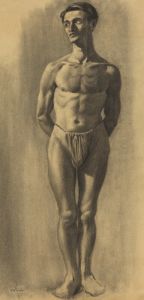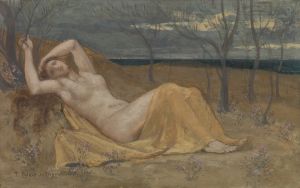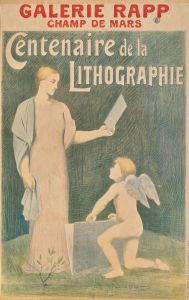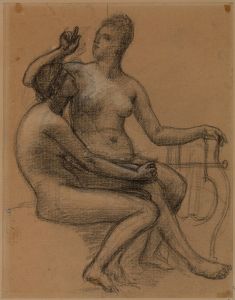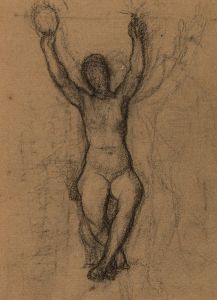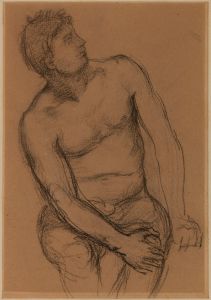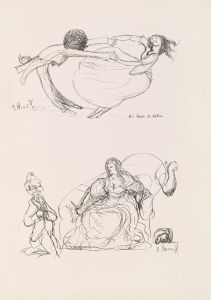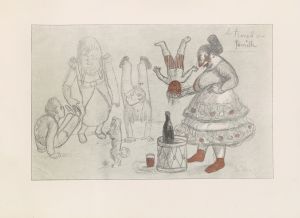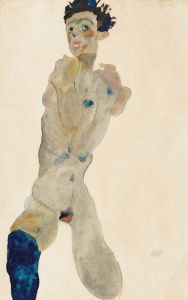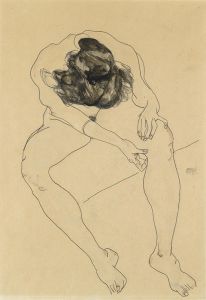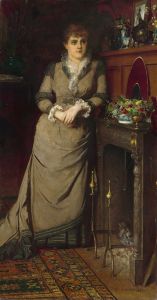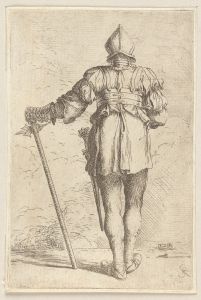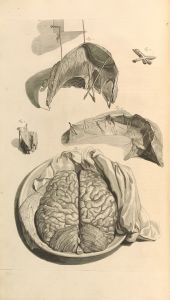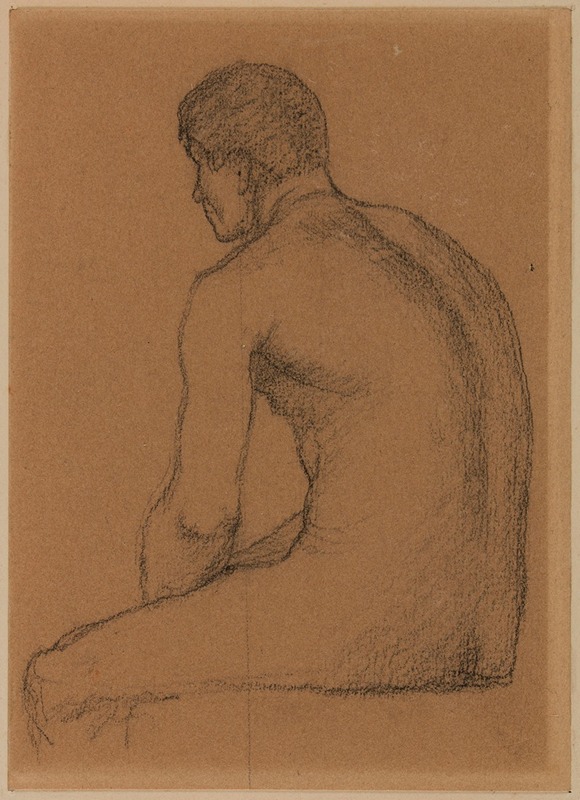
Homme assis nu, de dos
A hand-painted replica of Pierre Puvis de Chavannes’s masterpiece Homme assis nu, de dos, meticulously crafted by professional artists to capture the true essence of the original. Each piece is created with museum-quality canvas and rare mineral pigments, carefully painted by experienced artists with delicate brushstrokes and rich, layered colors to perfectly recreate the texture of the original artwork. Unlike machine-printed reproductions, this hand-painted version brings the painting to life, infused with the artist’s emotions and skill in every stroke. Whether for personal collection or home decoration, it instantly elevates the artistic atmosphere of any space.
Pierre Puvis de Chavannes, a notable French painter of the 19th century, is renowned for his distinctive style that often combined classical themes with a modern sensibility. Among his works, "Homme assis nu, de dos" (translated as "Seated Nude Man, from the Back") stands out as an exemplary piece that showcases his unique approach to figure painting.
Puvis de Chavannes was born on December 14, 1824, in Lyon, France. He initially pursued a career in engineering but later shifted his focus to painting, studying under several artists, including Eugène Delacroix. His work is often associated with the Symbolist movement, although he maintained a unique style that was not easily categorized. Puvis de Chavannes is best known for his large-scale murals, but he also produced numerous smaller works, including studies and sketches that reveal his mastery of the human form.
"Homme assis nu, de dos" is a study of the male nude, a subject that Puvis de Chavannes approached with a sense of classical restraint and modern introspection. The painting depicts a male figure seated with his back to the viewer, emphasizing the contours and musculature of the human body. The composition is simple yet powerful, focusing on the play of light and shadow across the figure's back. This work reflects Puvis de Chavannes' interest in the human form and his ability to convey emotion and depth through minimalistic means.
The painting is characterized by its muted color palette, which is typical of Puvis de Chavannes' work. He often employed soft, earthy tones that lent a timeless quality to his paintings. In "Homme assis nu, de dos," the subdued colors enhance the contemplative mood of the piece, drawing the viewer's attention to the figure's posture and the subtle details of the anatomy.
Puvis de Chavannes' approach to the nude was influenced by his admiration for classical art and his desire to create works that transcended the specificities of time and place. His figures often possess a sense of idealized beauty, yet they are grounded in a realistic portrayal of the human body. This balance between idealism and realism is a hallmark of his style and contributes to the enduring appeal of his work.
While "Homme assis nu, de dos" is not as widely known as some of Puvis de Chavannes' larger murals, it is an important example of his skill as a draftsman and his ability to convey complex emotions through simple compositions. The painting invites viewers to reflect on the human condition, a theme that resonates throughout Puvis de Chavannes' oeuvre.
Puvis de Chavannes' influence extended beyond his lifetime, impacting a generation of artists who admired his ability to blend classical themes with modern techniques. His work paved the way for later developments in modern art, and his emphasis on the symbolic and the timeless continues to inspire artists today.
In summary, "Homme assis nu, de dos" is a testament to Pierre Puvis de Chavannes' mastery of the human form and his ability to evoke emotion through simplicity and restraint. The painting remains a significant piece within his body of work, reflecting the artist's enduring legacy in the world of art.





